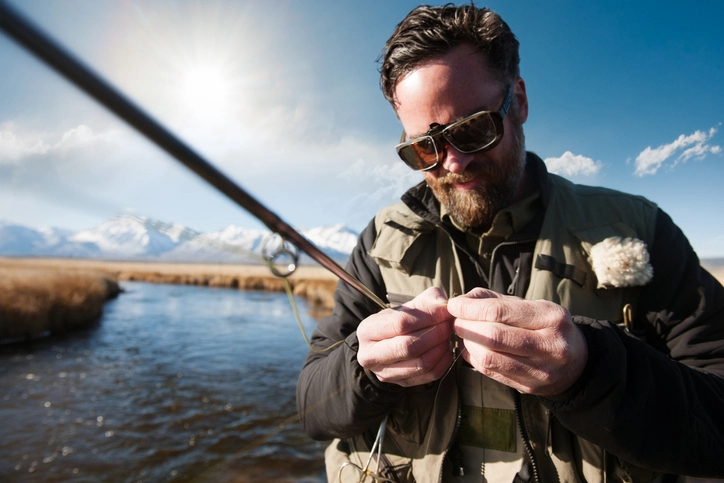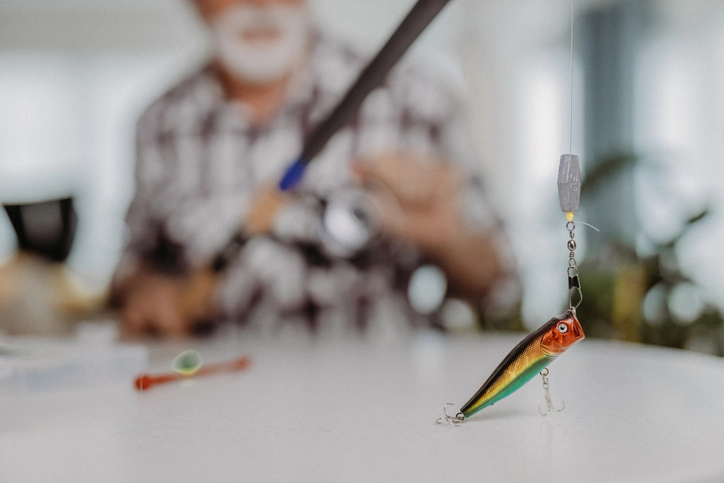Walleye fish, popular in North America, lives long and grows large, thrilling anglers. Anglers must know when to keep or release these vital fish.
Explore walleye fishing rules, tips, and conservation practices for anglers. Learn when and how to keep or release walleye.
Understanding Walleye Behavior and Conservation
Keeping walleye fish populations healthy is very important. To do this, we need to think about where they live, the water they swim in, what they eat, and how people fish for them.
If too many walleye are caught or if their homes are damaged, there won’t be as many of them around. People who fish for walleye should make sure they’re catching them in a way that doesn’t harm their numbers.
Fishers can help look after walleye by following some rules. It’s important that enough walleye are left in the water, especially those that can have babies, so there will always be more walleye in the future. Before fishing, it’s a good idea to think about how many walleye are in the water, if they are ready to have babies, and what the local fishing rules say.
Responsible walleye fishing goes beyond catching; understand their life cycle, behavior, and population.
Fishing Guidelines for Keeping Walleye Fish
- Before fishing, check regulations for size limits, bag limits, and rules. Be aware of any seasonal restrictions for walleye in your area.
- Releasing caught walleye is crucial for declining populations, aiding breeding.
- Harvest smaller walleye to sustain the population; larger ones aid reproduction.
- For sustainability, consider catch and release for walleye when populations are strong. Releasing them helps growth and boosts reproduction rates.
- To reduce stress, handle walleye with wet hands or a net. Avoid gills and keep fish wet until release.
Anglers enjoy walleye fishing, ensuring a thriving fishery for generations ahead.
Fishing Techniques and Best Practices for Walleye
To succeed in walleye fishing, perfect techniques and best practices are crucial. Understand effective methods for a successful angling experience.
Live Bait and Artificial Lures
– Live bait is key in walleye fishing.
– Walleye favors minnows, leeches, and nightcrawlers.
– Rig bait well for best results.
Artificial lures enhance walleye fishing; crankbaits, jigs, and soft plastics mimic prey. Try varied colors, sizes, and styles for optimal results in fishing.
Hooking and Landing Walleye
Catching walleye fish is all about being gentle and skilled. After a fish bites, wait a bit before you try to pull it in. This gives the fish time to really grab onto the bait, so you won’t lose it when you try to catch the fish.
Knowing about different hooks is super important too, especially when you use fake bait. Use three-pointed hooks with swimmy baits and single hooks with bouncy baits. Make sure your hook is sharp and in the right spot to catch walleye fish successfully.
Targeting Big Walleye and Ice Fishing
Catching big walleye fish is a fun challenge, even for people who fish a lot. Fishing near deep places in the water, like underwater hills, can help you find big walleye. Using bigger bait and changing how you move the bait can make big walleye want to bite.
When it’s cold and the water turns to ice, you can still fish for walleye! Make a hole in the ice near places where fish like to hide, and use a jigging rod with bait or pretend bait to catch them.
To get really good at catching walleye, learn how to use bait and pretend bait the right way. Knowing how to catch, pull in, and safely handle fish is important. Ice fishing for walleye is also very fun. Try these tips to make your fishing trips even better!
Conclusion
Fishers need to help keep walleye fish safe. It’s important to know how walleye act, follow fishing rules, and not catch too many.
We should listen to the rules to help walleye fish keep living in places like North Dakota, Mille Lacs Lake, Banks Lake, and others. These spots are important for having lots of different fish, including walleye. By sticking to the rules, we help keep the fish and their homes healthy.
Fishers help keep everything in nature balanced. They do this by fishing the right way, not catching too many fish, and letting go of extra fish they don’t need. This helps keep the walleye fish and the lakes they live in doing well.
FAQ
When should I keep or release walleye fish?
Keeping or releasing walleye hinges on regulation adherence, population health, and conservation. Releasing fish aids population sustainability and enriches fishing experiences, especially for trophy walleye. Consider local rules and the fish population status when deciding.
What are some tips for successful walleye fishing?
Improve walleye fishing by using live bait like minnows or nightcrawlers. Check water temperatures to locate walleye in more profound, calmer waters. Fish during low light periods for better activity. Also, try various techniques like trolling or jigging. Follow fishing regulations and get the required licenses for a successful outing.
What are some best practices for walleye conservation?
Follow regulations and do catch and release to aid conservation efforts. Keep hands wet, and use tools for gentle fish release. Engage in local conservation for sustainable walleye protection.
Can you provide any tips for targeting larger walleye?
For trophy walleye, use large baits to attract them. Target areas with structures like rocky points or drop-offs. Fish during low light or dawn/dusk for better success.
Related Articles:
1. Pause post-bite for a secure hook set
2. Targeting big walleye is a challenge for seasoned anglers
3. Artificial lures enhance walleye fishing


